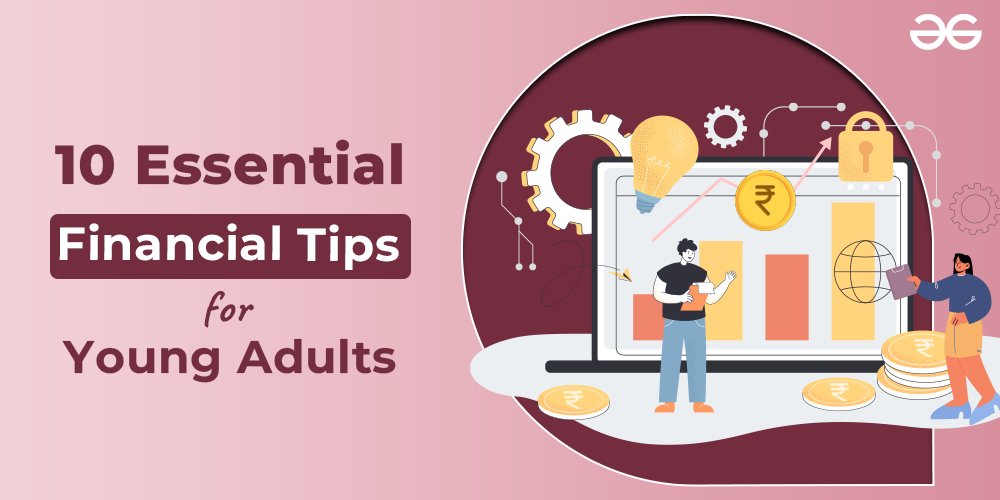3 Top Suggestions For Investing Your Money in 2024
3 Top Suggestions For Investing Your Money in 2024
Blog Article
What Are The Most Effective Bonds Alternatives For Investing In 2024?
The best strategy for 2024 is to buy bonds for income generation, diversification and risk management. Here are the most effective ways to make a bet on bonds this year These include: Government Bonds
U.S. Treasury Bonds are one of the most secure investments due to the fact that they are backed up by the U.S. Government. They are offered in different maturities including short-term (T-bills) medium-term (T-notes) as well as long-term (T-bonds).
Municipal Bonds These bonds are issued by both state and local governments. They typically provide tax-free income from interest and are therefore attractive to those with more tax-paying brackets.
Inflation Protected Securities (TIPS). These Treasury bonds have been indexed for inflation to help safeguard you from the risk of inflation.
Corporate Bonds:
Bonds with high ratings Only issued by financially sound, stable firms with excellent credit scores, these bonds provide moderate returns and are less risky than bonds with lower ratings.
High-Yield Bonds (Junk Bonds): Issued by businesses that have lower credit ratings, these bonds offer more returns to cover the increased risk.
Bond ETFs, Bond funds, and bond funds:
Bond Mutual Funds These funds pool money to buy a portfolio of bonds, which is diversified and managed by professional managers.
Bond ETFs - Similar to mutual funds, bond ETFs offer diversification. They are however traded on stock exchanges and provide greater liquidity.
Bonds issued by international companies:
Bonds from emerging markets: Bonds in developing countries have higher yields than those from developed countries, but also have higher risk due to the economic and political unrest.
Bonds from developed markets: Bonds of developed countries, such as European or Japanese Government Bonds, could offer diversification.
Green Bonds
Environmental, Social, and Governance (ESG) Bonds They are created to help fund green projects. These bonds are aimed at investors who care about sustainability and social responsibility.
Convertible bonds:
Hybrid Securities. They can be converted into a specific amount of shares issued by the company that issued them. They offer the possibility of capital appreciation and income from interest.
Floating Rate Bonds:
Adjustable Interest Rates: These bonds offer interest payments which are periodically adjusted in line with the benchmark rate. This helps mitigate the chance of fluctuations in interest rates.
Private Bonds:
Direct lending and private debt: Bonds issued by private firms or private debt funds, provide higher returns but come with more risk and less liquidity.
Municipal Bond Funds:
Diversified Municipal Investments (DMI): The funds are invested in an investment portfolio of municipal bonds. They are tax-deferred and diversification amongst various municipalities.
Laddering Strategy:
Bond Ladders: This strategy involves buying bonds with different maturities. As the shorter-term obligations mature, proceeds are reinvested into longer term bonds. This balances the risk and liquidity while reducing the risk of fluctuating interest rates.
Other Tips for 2020
Keep track of interest rates. Central banks' interest rates policies can impact bond prices and yields. Understanding the current trends in interest rates will assist you in becoming more knowledgeable about the choices you make.
Credit Ratings: Make note of credit ratings for bonds prior to investing in order to minimize the risk of default.
To manage interest rate risks be aware of the duration of bond investments. Bonds with shorter terms are less prone to changes in interest rates.
Diversification: Diversify bonds based on sector, geography, and kind.
Professional Advice: Talk to a financial adviser to help you tailor your bond investment strategy on your specific financial goals.
By carefully choosing and diversifying your bonds, you will achieve an balanced portfolio which can generate income in 2024, preserves the capital, and minimizes the risk. See the recommended more hints for Crossfi for blog recommendations.
What Are The 10 Best Ways To Invest In Retirement Accounts In 2024?
It is crucial to invest in retirement accounts if are looking to secure your financial future. Here are the best strategies to save money for retirement in 2024:
1. Maximize the Employer-sponsored plans
403b, 401k, and 457 Plans - Contribute the maximum amount, particularly if your employer will match your contributions.
Roth 401(k) If it is available, look into contributing to one to get tax-free withdraws during retirement.
2. Traditional and Roth IRAs
Traditional IRA Contributions to the Traditional IRA are tax-deductible, and investments are tax-deferred. When you withdraw money, it is taxed as a source of income at retirement.
Roth IRA: Contributions are made using after-tax dollars, however withdrawals are tax-free after retirement. It is a great option if you are planning to be in a tax bracket that is higher than your income bracket in the near future.
3. Self-Employed Pension Plans
SEP IRA : Simplified Employee pension IRAs permit substantial contributions and are ideal for small-sized businesses or self-employed individuals.
Solo 401(k): Ideal for sole proprietors, it offers contributions that are high and the possibility of contributing both as an employee and employer.
SIMPLE IRA Ideal for small business with more than 100 employees, SIMPLE IRA offers a simpler and more cost effective administration than a traditional 401k.
4. Target-Date Investments
Automated Adjustments The funds automatically adjust the allocation of assets to become more conservative as you approach your target retirement date offering an easy approach to managing investments.
5. Index Funds and ETFs
Low-Cost and Diversified Index funds and ETFs provide wide market exposure for an affordable cost, which is ideal for long-term growth and diversification within retirement accounts.
6. Dividend Growth Funds
Income that is steady: Investing into funds that focus on companies who have a long history of increasing their dividends can provide a steady income stream and also the potential to gain capital.
7. Bond Funds
Stability and Income: Incorporate bond funds to add stability and generate income, especially when you get closer to retirement and try to reduce volatility.
8. Real Estate Investment Trusts (REITs)
Diversification, Income: REITs can aid in diversifying your portfolio as well as earning income through exposure to real estate markets.
9. Inflation-Protected Securities
TIPS Treasury Inflation Protected Securities are government securities that indexable to inflation. They can safeguard your retirement savings from risk of inflation.
10. Alternative Investments
Commodities and Precious Metals. Adding a small amount of commodities such as silver or gold in your portfolio can safeguard you from inflation and economic uncertainty.
Cryptocurrencies. A modest allocation of cryptocurrencies for risk-averse investors could provide a high rate of growth, but it comes with a significant risk.
2024, the Year 2024: More Tips
Automated Contributions:
Make use of dollar-cost averaging and automate payments into your retirement account to keep the same amount.
Rebalancing and Review:
Re-evaluate and rebalance regularly your investments to maintain the allocation you want and adjust as your risk tolerance changes as your investment goals change.
Think about the tax implications
Think about the tax benefits of different retirement accounts and how they can be integrated in your overall plan.
Catch-Up Contributions:
Catch-up payments are available to people 50 or older.
Stay Informed
Be aware of changes to retirement account limits, tax laws and investment opportunities to optimize your retirement plan.
Consult a professional for advice:
Financial advisors can help you design a custom retirement plan that's aligned with your financial goals, and considers your risk tolerance as well as time horizon.
You can build a solid retirement portfolio by diversifying your investment portfolio and staying up-to-date on market developments. 
What Are the 10 Best Methods to Invest In Peer-to Peer Lending In 2024?
Investments in peer-topeer lending (P2P) could provide excellent returns, as well as diversify your portfolio. Here are the most effective methods to invest in P2P lending in 2024.
1. Reputable platforms for P2P
Platforms for Research: Take a look at established P2P lending platforms, like LendingClub Prosper Upstart. These platforms have an established reputation and reliable screening processes for borrowers.
Platform Diversification: Look into investing on different platforms to diversify risk and improve opportunities for return.
2. Diversify Your Investments
Spread your funds across multiple Loans: Diversify by investing your funds in multiple loans, instead of placing a large sum of money in a single loan. This helps mitigate the risk of default.
Vary the Loan Grades To ensure a balance between risks and returns, invest in loans of different risk levels (e.g. medium or high grade).
3. Automated investment tools
Auto-Invest Features: Use auto-investing tools offered by P2P platforms to allocate your funds based on your risk preferences and investment criteria, ensuring consistent diversification and the possibility of reinvestment.
4. Prioritise the quality of credit
Examine the profiles of Borrowers: Take time to review the credit scores of borrowers, their earnings levels, employment status, and the purpose of the loan to determine the probability of repayment.
Risk Assessment Prioritize loans that have better credit ratings to reduce the risk of default. The possibility of a slightly lower return is not a bad thing.
5. Reinvest Earnings
Compounded Returns: Reinvest principal and interest repayments often to maximize growth potential over time.
6. Monitor and adjust Your Portfolio
Regular Reviews: Periodically evaluate your investment portfolio and ensure that it's in line with your financial goals and willingness to take risks. When necessary you can make adjustments based on the performance of your portfolio and market conditions.
Performance Metrics - Track key performance metrics such as default rates, cash flow, and net returns to make decisions based on facts.
7. Understanding Platform Fees
Fee Structures. Be aware of all fees that are charged, such as the origination fee, the servicing fee, and any other administrative costs. Lower fees can boost your net return.
8. Take into account secondary markets
Options for liquidity: Certain P2P platforms provide secondary markets that allows you to buy and sell loans which can provide greater liquidity. It also allows for more flexibility in your portfolio.
9. Keep abreast of the latest regulations
Regulations and Compliance - P2P lending is subject to regulatory changes. Stay informed about current regulations as well as any changes coming up that could impact the lending environment for P2P.
10. Risk Management Strategies
Maintain an Emergency Fund outside of your P2P investments to ensure that you have liquidity.
Limit Exposure Limit exposure P2P loans by keeping it to a fraction of your overall portfolio. Diversification is key.
Other Tips for 2024
Perform thorough due diligence:
Market Research: Find out the size of the market and its potential. Also, establish the competition level.
Management Team: Go over the management team members to determine their experience, track records and capabilities.
Financial Projections: Review the financial health, projections and business plan of the company.
Diversify Your Portfolio:
Diversify your investments across startups, sectors and phases of development to minimize the risk and increase your potential return.
Understand the Risks:
The decision to invest in startups or private equity carries a high level of risk. This includes the possibility of losing everything. Only allocate a portion of your portfolio to this class of assets.
Leverage and Network Expertise:
Connections with experienced investors, specialists in the field, as well as venture capitalists can assist you to get access to top quality investment opportunities.
Keep up-to-date on the latest trends
Be aware of industry trends and emerging technologies as well as economic conditions which could impact the startup scene and private equity.
Compliance with the law and regulations:
Make sure all investments comply with legal and regulatory standards. Check with your financial and legal advisers to navigate the maze of private investment.
Exit Strategy:
Know the exit plan you have in place. This could involve IPOs (initial public offerings) or mergers and acquisitions or even secondary sales.
By using these strategies, and staying up-to-date it's possible to invest effectively in startups and in private equity by 2024, in addition to balancing high returns with responsible risk management.